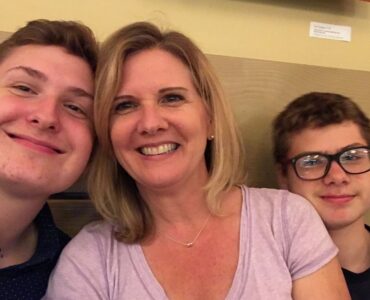 I was in Michigan this week at our annual girls’ weekend—two wonderfully lazy days spent by the fireplace in a cozy inn, catching up with seven old and new friends. We ate and shopped and laughed and it wasn’t until I got home that I remembered one friend mentioning how stressful her job was.
I was in Michigan this week at our annual girls’ weekend—two wonderfully lazy days spent by the fireplace in a cozy inn, catching up with seven old and new friends. We ate and shopped and laughed and it wasn’t until I got home that I remembered one friend mentioning how stressful her job was.
I have no idea what her job is. I never asked. And because I never asked, I missed a chance to connect with her in a more meaningful way.
Curiosity leads to connection, in life and in writing.
But most of us are hesitant to ask personal questions. We don’t want to be nosy and we’re told that curiosity leads to the death of innocent cats. The warning in that old adage is clear: being inquisitive about other’s affairs may get you into trouble.
That rule doesn’t apply to writing. If you, as the author, aren’t thinking of the obvious questions the reader may raise and then answering them, you’re killing your story.
Why?
It’s not just about piling on facts or details or descriptions. When we write we ask why of everything in order to uncover a deeper understanding and get to the root of an experience.
But why?
Because that’s the only way to reveal character. And until a character is revealed, the reader can’t identify.
Why not?
Call it human hard-wiring. As my former writing teacher says in his book Immediate Fiction, “Identification is the goal not only of every story but of every life. It’s our deepest social need. It’s at the heart of all meaningful social interaction. It’s what makes life worthwhile. It’s what we’re all after. We don’t think of it that way. We don’t say, ‘I’m going to go out tonight to find someone to identify with,’ but that’s what we’re doing.”
In storytelling, we create identification by starting with the basics:
- What does my character want?
- What is he/she doing to get it?
- What is the obstacle?
- What action is being taken to overcome the obstacle?
Answer those questions and you have the foundation of a successful story. Ignore them and you’ve got the equivalent of a dead cat.
So ask yourself: could I up my level of curiosity? Don’t wait until you’re facing the blank page. Practice with your own group of friends or with your family. Channel your inner two-year-old and keep asking why.
It’s the only way to arrive at the sweet spot where you connect and identify with your reader. And that’s the reason you’re writing in the first place.







